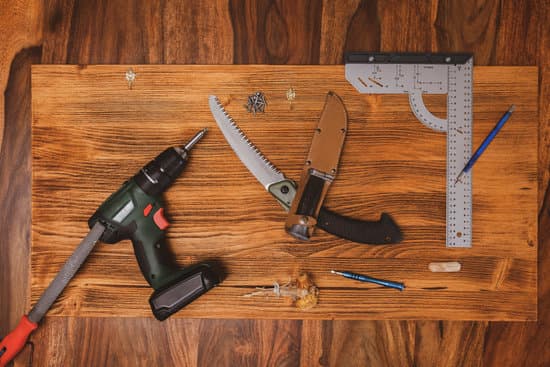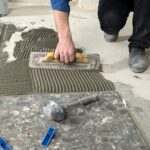Are you wondering how to improve 3G signal at home? Understanding the basics of 3G signal and how it works is the first step towards finding a solution to your signal issues.
In this article, we will discuss common factors that affect 3G signal strength at home, how to identify dead zones and weak signal areas in your home, and tips for improving 3G signal strength. We will also explore the advantages and disadvantages of using signal boosters, DIY steps for building a homemade signal booster, comparing different 3G signal boosters on the market, and alternative solutions for improving 3G signal at home.
To improve 3G signal at home, it’s important to understand what 3G signal is and how it works. This will help you identify the best solution for your specific signal issues. Factors such as distance from the nearest cell tower, obstructions like buildings or trees, and interference from other electronic devices can all impact your 3G signal strength. Identifying dead zones and weak signal areas in your home is crucial in finding the most effective solution.
Once you have identified the areas with poor 3G signal in your home, there are several tips for improving the signal strength. From repositioning your router or device to investing in a reliable signal booster, there are various options to consider.
We will also explore DIY steps for building a homemade signal booster and compare different 3G signal boosters on the market to help you find the best solution for your specific needs. Whether you choose to invest in a commercial booster or explore alternative solutions, our goal is to help you find the best way to improve your 3G signal at home.
Common Factors Affecting 3G Signal Strength at Home
There are several common factors that can affect the strength of your 3G signal at home. One of the most significant factors is the distance between your mobile device and the nearest cell tower. The farther you are from a tower, the weaker your signal will be. Additionally, physical barriers such as walls, buildings, and even natural features like trees and hills can obstruct the signal and reduce its strength.
Another important factor to consider is interference from other electronic devices. Household appliances, electronics, and even wireless routers can emit signals that interfere with the 3G signal, leading to a decrease in signal strength. Finally, network congestion can also impact 3G signal strength at home. During peak hours when many people are using their devices simultaneously, the network may become overloaded, resulting in slower data speeds and weaker signals.
If you are experiencing poor 3G signal at home, there are several steps you can take to improve it. First, try moving closer to a window or going outside if you are inside a building. This may help reduce obstructions and improve signal strength. Additionally, consider relocating electronic devices that could be causing interference away from areas where you use your mobile device.
Furthermore, you may want to invest in a signal booster specifically designed to improve 3G signal strength at home. These devices work by capturing existing cellular signals outside of your home, amplifying them, and then rebroadcasting the enhanced signal within your home. Alternatively, building a homemade signal booster using materials such as aluminum foil or a metal sieve may also be an option for improving your 3G signal at home on a budget.
Identifying Dead Zones and Weak Signal Areas in Your Home
One of the first steps in improving your 3G signal at home is to identify the dead zones and weak signal areas in your house. Walk around your home with your 3G-enabled device and take note of areas where you consistently experience dropped calls, slow data speeds, or no signal at all. Common areas for weak signals include basements, attics, and rooms located farthest from the nearest cell tower.
Another way to identify dead zones is to check the signal strength on your device. Most devices have a feature that allows you to see the numerical value of your signal strength. A strong 3G signal typically ranges from – 50 dBm to – 85 dBm, while anything below – 100 dBm is considered a poor signal. Take note of the specific locations where you notice a significant drop in signal strength.
You can also use websites or apps that provide maps of cell phone towers and coverage areas to determine if you are located near a tower. This information can help you understand why certain parts of your home may have weaker signals than others. Once you have identified these problem areas, you can move on to implementing strategies to improve your 3G signal at home.
Understanding how to improve 3G signal at home is important for those who rely on their mobile devices for communication, work, and entertainment. By identifying dead zones and weak signal areas in your home, you can take proactive steps towards finding the best solution for boosting your 3G signal strength.
Tips for Improving 3G Signal Strength at Home
When it comes to improving 3G signal strength at home, there are several tips and tricks you can try to enhance your mobile connectivity. Here are some useful suggestions on how to improve 3G signal at home:
1. Reposition Your Router: One simple way to improve your 3G signal at home is by repositioning your router. Place it in a central location in your home, away from any obstructions such as walls or large furniture. This will help the signal reach all areas of your house more effectively.
2. Use a Signal Booster: Investing in a signal booster is another effective way to enhance your 3G signal at home. Signal boosters work by capturing existing outside signals and amplifying them inside the building. This can significantly improve the strength and reliability of your 3G connection.
3. Upgrade Your Antenna: If you have a wireless router with an external antenna, consider upgrading to a high-gain antenna for better coverage and improved 3G signal strength. High-gain antennas can extend the range of your router and provide a stronger signal throughout your home.
By implementing these tips on how to improve 3G signal at home, you can experience better connectivity and fewer dropped calls or slow internet speeds within your living space. Whether it’s repositioning your router, using a signal booster, or upgrading your antenna, there are various options available for enhancing your 3G signal strength at home.
Advantages and Disadvantages of Using Signal Boosters
Signal boosters can be an effective solution for improving 3G signal strength at home, but it is important to weigh the advantages and disadvantages before making a decision. One of the main advantages of using a signal booster is that it can significantly enhance the quality of your 3G signal, allowing you to enjoy faster data speeds and better call quality.
This can be especially beneficial if you live in an area with poor network coverage or if your home has a lot of dead zones.
Another advantage of using a signal booster is that it is relatively easy to install and can be used with multiple devices, providing improved signal strength throughout your home. Additionally, signal boosters are compatible with all major carriers, so you don’t have to worry about compatibility issues if you switch providers in the future.
However, there are also some disadvantages to consider when it comes to using signal boosters. One drawback is that some signal boosters can be quite expensive, especially those that offer advanced features such as support for multiple users and wide coverage areas. Furthermore, while signal boosters can improve 3G signal strength within your home, they may not be as effective in outdoor areas or while on the move.
Despite these drawbacks, for many people, the advantages of using a signal booster outweigh the disadvantages. Ultimately, determining whether a signal booster is the right solution for improving 3G signal at home will depend on factors such as your specific needs, budget, and location.
DIY Steps for Building a Homemade Signal Booster
If you find yourself struggling with a weak 3G signal at home, building your own homemade signal booster can be a cost-effective solution to improve your signal strength. With just a few household items and some basic knowledge, you can create a simple yet effective booster that could make a noticeable difference in the quality of your 3G connection.
One of the easiest and most common methods for creating a homemade signal booster is using aluminum foil. By placing strips of aluminum foil behind your router or around your phone, you can potentially enhance the signal strength by reflecting and redirecting the radio waves. This simple DIY trick is worth trying if you’re looking for an easy and inexpensive way to improve your 3G signal at home.
Another DIY method for building a homemade signal booster involves using a soda can. By cutting off the top and bottom of the can and then cutting it lengthwise, you can create a parabolic shape that can help to focus and strengthen the 3G signal.
Placing this modified can behind your router or near your phone may help to improve signal reception in certain areas of your home. While these DIY methods may not provide as significant of an improvement as commercial signal boosters, they are certainly worth trying before investing in more expensive options on the market.
In addition to these DIY methods, there are other tricks and techniques that can help improve 3G signal at home. From adjusting the position of your router to minimizing interference from other electronic devices, exploring different solutions may lead to finding the best approach for enhancing your 3G signal strength.
Comparing Different 3G Signal Boosters on the Market
When it comes to improving 3G signal at home, one of the most popular solutions is using signal boosters. Signal boosters work by amplifying the existing 3G signal in your area and then rebroadcasting it within your home, resulting in improved signal strength. There are several different types of 3G signal boosters on the market, each with its own set of features and capabilities.
Types of 3G Signal Boosters
There are two main types of 3G signal boosters: cradle boosters and whole-home boosters. Cradle boosters are designed to enhance the signal for a single device at a time, making them ideal for individual use. On the other hand, whole-home boosters are designed to provide enhanced signal coverage for an entire household, making them more suitable for larger homes or areas with multiple users.
Features to Consider
When comparing different 3G signal boosters on the market, there are several important features to consider. These include the gain (or amplification) offered by the booster, the supported frequency bands, maximum coverage area, and any additional features such as automatic gain control or remote monitoring capabilities. It’s important to carefully evaluate these features to ensure that you choose a booster that meets your specific needs.
Comparing Options
Take the time to research and compare different 3G signal booster options available on the market. Look for user reviews and expert opinions to gain insight into how well each booster performs in real-world situations.
Additionally, consider reaching out to manufacturers or retailers directly to ask any questions you may have about their products. By thoroughly comparing your options, you can make an informed decision when selecting a 3G signal booster that will best improve your home’s signal strength.
Alternative Solutions for Improving 3G Signal at Home
If you are struggling with weak 3G signal at home, there are alternative solutions you can consider to improve your signal strength. While signal boosters can be an effective option for many, some individuals may prefer exploring alternative methods before making a purchase. Here are some alternative solutions for improving 3G signal at home.
Utilize Wi-Fi Calling
One alternative solution to improving 3G signal at home is to utilize Wi-Fi calling. Many smartphones have the capability to make calls and send texts over a Wi-Fi connection, which can be especially helpful in areas with poor cellular service. By connecting your phone to your home Wi-Fi network, you can bypass the weak 3G signal and use a stronger internet connection for your communication needs.
Consider Network Extenders
Another alternative solution is to consider using network extenders. These devices work by connecting to your home internet network and creating a mini-cellular tower within your home. This allows you to use a stronger and more reliable cellular connection, even in areas where the 3G signal is typically weak. Network extenders can be an effective way to improve 3G signal without the need for a traditional signal booster.
Opt for Carrier-Specific Solutions
Some carriers offer specific solutions for improving 3G signal at home. For example, certain carriers provide femtocells, which are similar to network extenders but are specifically designed for their own network. These devices can be a viable option for individuals who want a carrier-specific solution for their 3G signal issues.
By considering these alternative solutions, you may be able to improve your 3G signal at home without relying solely on traditional signal boosters. Each option has its own advantages and limitations, so it’s important to weigh your preferences and needs before deciding on the best solution for improving your 3G signal strength at home.
Conclusion
In conclusion, dealing with poor 3G signal at home can be frustrating but there are several solutions to consider. Understanding the factors that affect signal strength, identifying dead zones, and employing simple tips such as adjusting the placement of your devices or using Wi-Fi calling can make a significant difference. Additionally, investing in a reliable signal booster is another option that can effectively improve your 3G signal at home.
When considering signal boosters, it’s important to weigh the advantages and disadvantages. While they can significantly enhance your signal strength, some may require professional installation and ongoing maintenance. Another alternative to explore is building your own homemade signal booster using readily available materials.
It’s essential to assess your specific needs and budget before choosing the best solution for improving your 3G signal at home. Researching different types of boosters and comparing their features can help you make an informed decision. By taking proactive steps and exploring various options, you can find the most effective way to enhance your 3G signal and enjoy reliable connectivity throughout your home.
Frequently Asked Questions
How Can I Make My 3G Signal Stronger?
You can make your 3G signal stronger by ensuring that you are in an area with good network coverage. You can also try using a signal booster or antenna to improve the signal strength.
Do 3G Signal Boosters Work?
3G signal boosters can work to improve your 3G signal, but it’s important to choose a high-quality, certified device to ensure it complies with regulations. Additionally, positioning and installation are crucial for optimal performance.
How Can I Make My Cell Signal Stronger at Home?
To make your cell signal stronger at home, you can start by keeping your phone charged and updating its software. Additionally, using Wi-Fi calling, installing a cell signal booster, or locating areas with better reception in your home can help improve the signal strength.

I’m thrilled to have you here as a part of the Remodeling Top community. This is where my journey as an architect and remodeling enthusiast intersects with your passion for transforming houses into dream homes.





